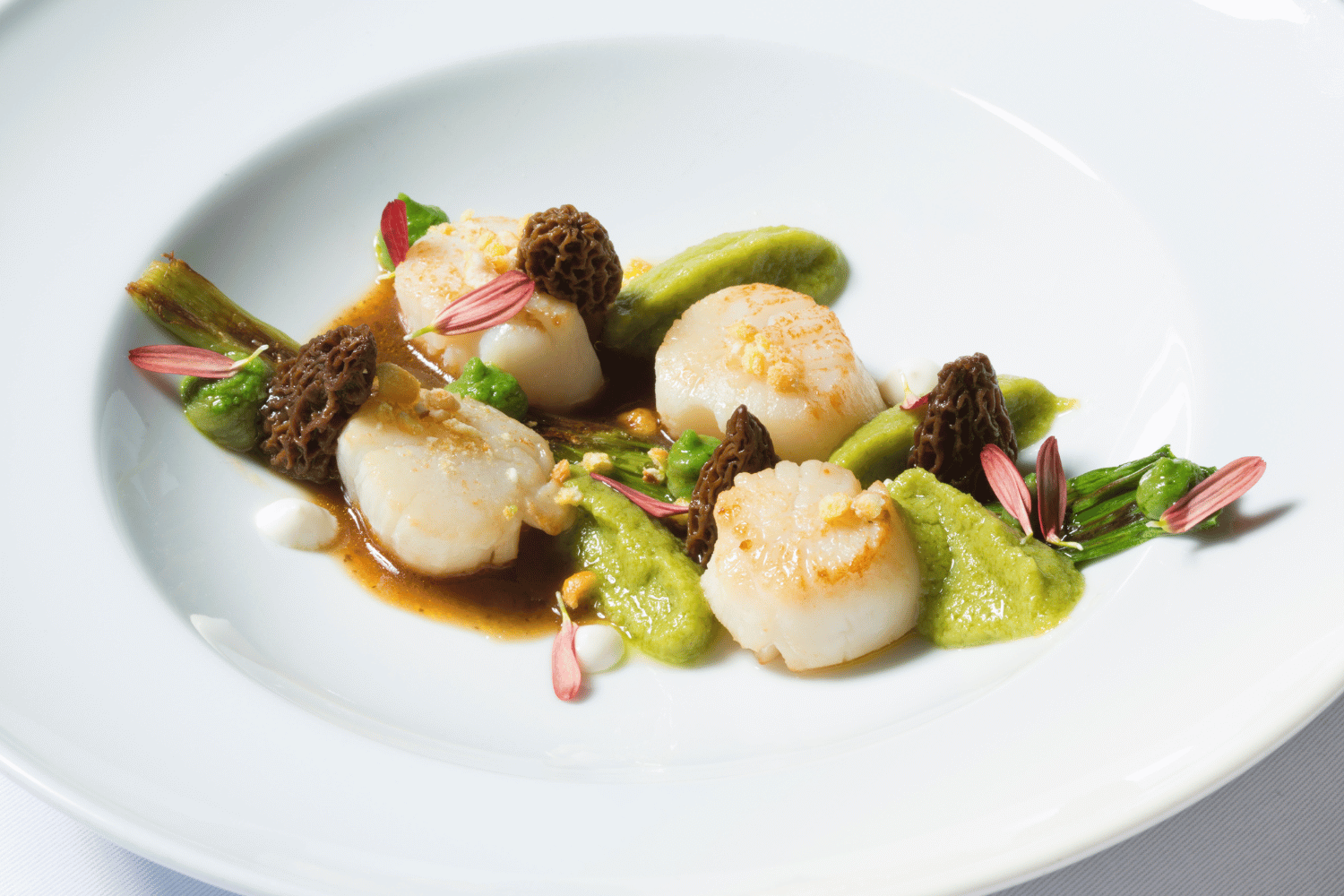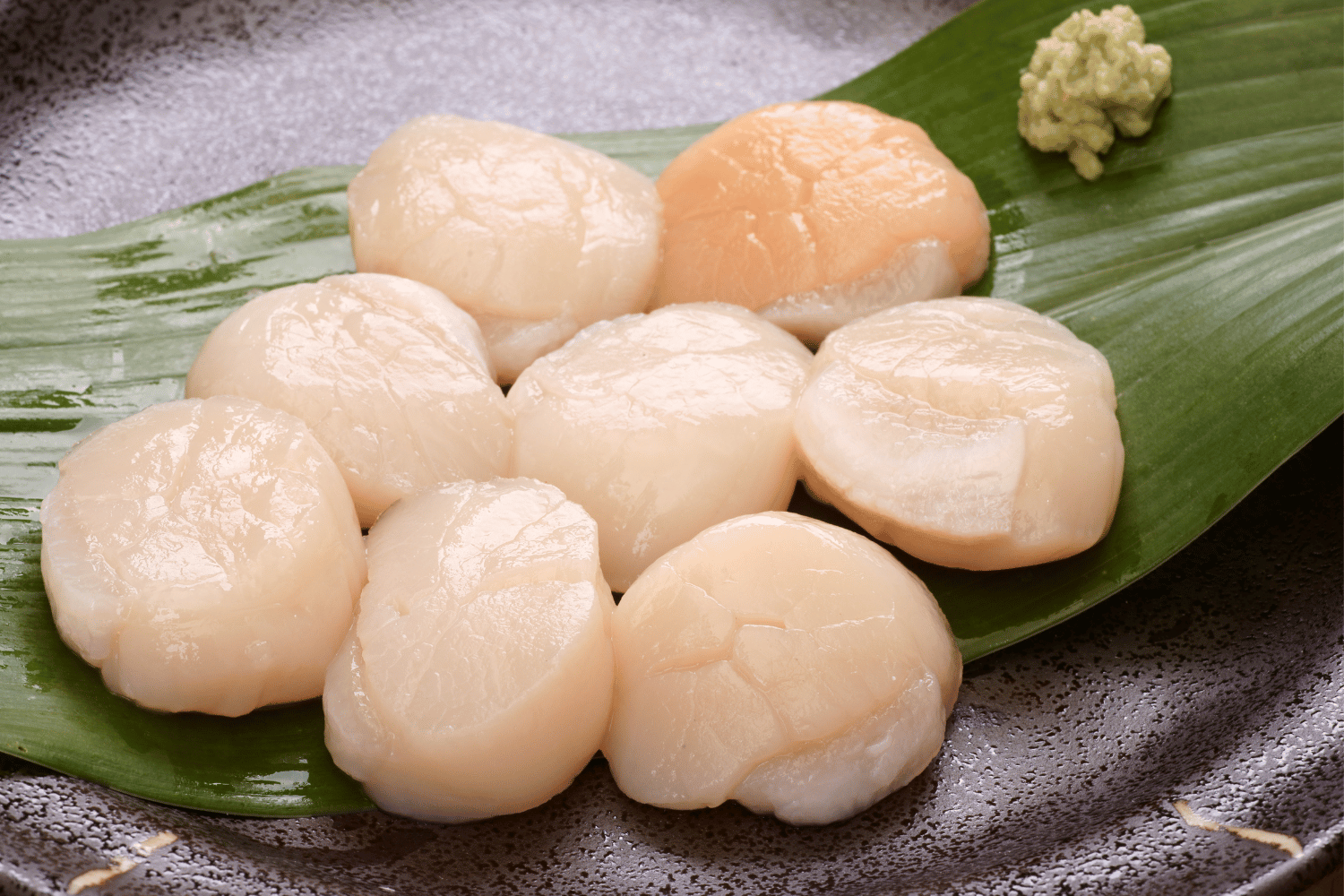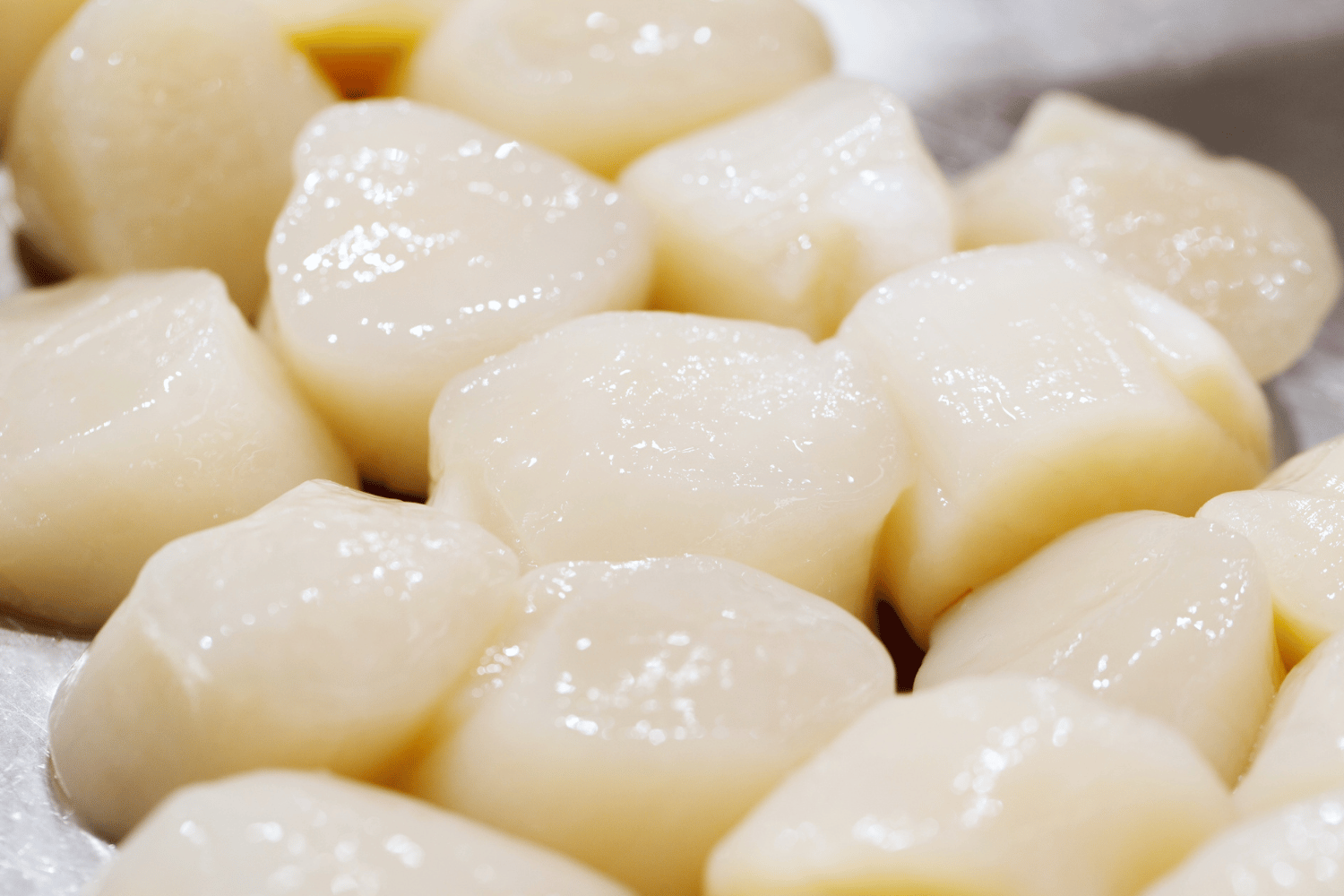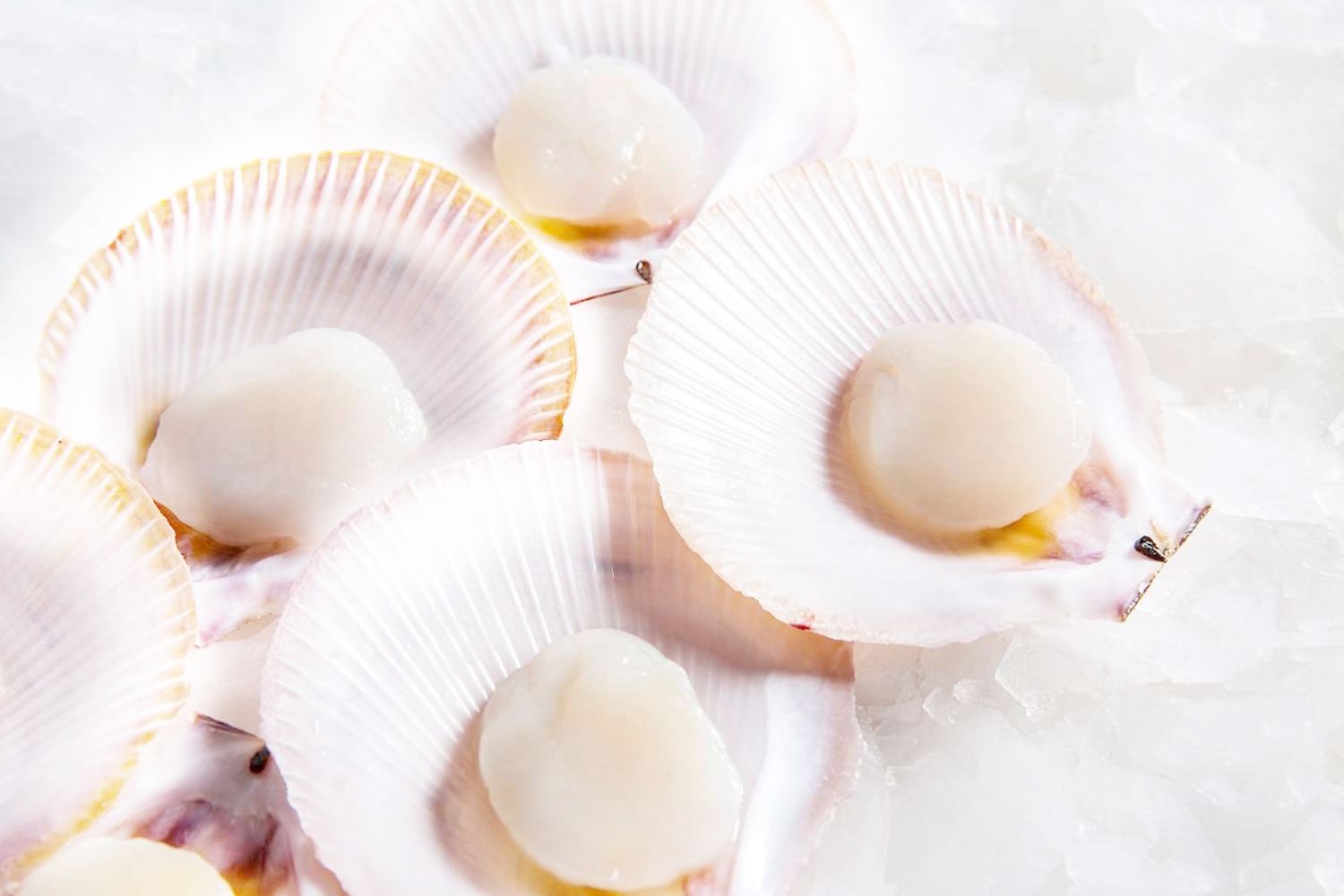

EASTER ORDERS ARE CLOSED!
Wishing everyone a Happy Easter



Scallops offer a culinary adventure that transcends the ordinary, from the shimmering depths of the Atlantic Ocean to your plate. In this extensive guide, we’ll unravel the mysteries surrounding these delicious shellfish, explore their various types, understand how they’re harvested and equip you with easy-to-follow recipes to make the most of them in your kitchen.
Scallops are a type of bivalve mollusc that dwell in both shallow and deep waters. They boast two shells, which are often compared to fans, and inside lies the delectable part—the adductor muscle. This muscle is responsible for the scallop’s ability to open and close its shells and is the part that ends up on our plates, offering sweet and tender meat.
When it comes to scallops, there’s more than meets the eye. Two main types are sea scallops and bay scallops. Bay scallops, smaller and found in shallow waters, offer a delicate flavour. In contrast, sea scallops are larger and dwell in deeper offshore waters, bringing a plumper texture to your plate.
Diver scallops, hand-harvested by skilled divers, and dayboat scallops, caught from small boats to ensure freshness, are additional options for the discerning seafood enthusiast.

Scallops lead fascinating lives on the ocean floor, utilising their adductor muscles to navigate through the waters. Harvesting methods include dredging, where a specialised net combs the ocean floor, and diving, a hands-on approach that ensures a more selective and sustainable catch.
For those who prioritise sustainable choices, dayboat scallops are a stellar option. Caught from smaller vessels, these scallops contribute to both ecological balance and peak freshness. Choosing hand-harvested diver scallops also supports sustainable practices, as these scallops are carefully gathered by divers without impacting the ocean floor.
Scallops are also classified based on processing and preservation methods. The key difference lies in how they’re packed—wet and dry scallops.
Dry-packed scallops, with their natural moisture content, are ideal for achieving that perfect sear. The absence of excess water ensures a beautifully caramelised exterior, locking in the tender meat’s natural flavours.
On the other hand, wet-packed scallops are often treated with sodium triphosphate. They may retain excess moisture, leading to a rubbery texture and altered taste.

When preparing scallops, whether seared or incorporated into a recipe, choosing the right type—wet or dry—can significantly impact the final result. Dry scallops shine in dishes where a golden sear is desired, while wet scallops might find their place in recipes where their added moisture complements the overall dish.
When you buy scallops, look for those labelled ‘dry-packed’ to guarantee minimal processing and artificial preservatives. These scallops, immediately frozen to maintain freshness, provide a canvas for your culinary creativity.
When you bring your fresh scallops home, a few simple tips ensure they stay at their best. Pat them dry with a paper towel to remove excess moisture, enhancing the searing process. Store them in the coldest part of your refrigerator, ideally wrapped in a tea towel, for up to two days. For longer storage, consider freezing them in a sealed container, maintaining their quality for up to three months.
What are potato scallops?Potato scallops are slices of potato that are typically coated in batter and deep-fried until golden and crispy. In Australia and New Zealand, the dish is enjoyed for its crunchy texture and is often served with salt and vinegar. |
When dealing with frozen scallops, make sure to follow proper defrosting procedures to maintain their quality and flavour.
As many scallops swim in cold sea waters, replicating these conditions during defrosting is crucial. To defrost, place the frozen scallops in a sealed plastic bag and immerse them in cold water. This method prevents the scallops from soaking up excess water, preserving their natural sweetness and texture.
Now, let’s dive into the most exciting part—cooking scallops! Whether you’re a seasoned chef or a home cook looking to impress, scallops offer endless possibilities.

Ingredients:
Instructions:
Ingredients:
Instructions:
Ingredients:
Instructions:
Ingredients:
Instructions:
Ingredients:
Instructions:
Understanding what scallops are opens the door to a world of culinary possibilities. From choosing the right type for your dish to mastering the art of preparation, scallops offer a delicious journey for seafood enthusiasts.
Whether you prefer the sweet tenderness of bay scallops or the plump richness of sea scallops, the ocean’s bounty is at your fingertips. So, go ahead, explore the world of scallops, and bring the best of the ocean to your table year-round!